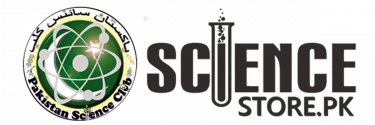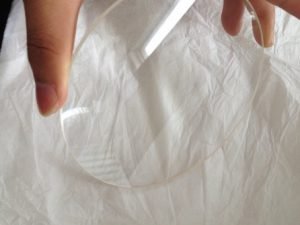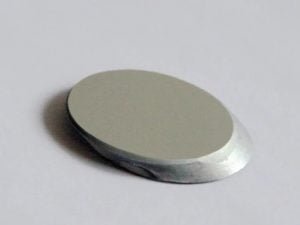D150 F750 mm Newtonian reflector Astronomical Telescope (Made in Pakistan)
| Weight | 15000 g |
|---|---|
| Dimensions | 40 × 40 × 75 cm |
The best and most affordable (Made in Pakistan) Newtonian Reflector Astronomical Telescope for sale in Pakistan. 6 Inches D150 F750mm Sky-Watcher Classic 150 Dobsonian-type best for beginners as well as for advanced hobby astronomers. Made by the Pak Science Club team. #Made in Pakistan
Made in Pakistan Newtonian reflector Telescope D150 F750mm Best for Planets, Moon and Nebulas
Astronomical Telescope PSC D150F750mm at Low Price in Pakistan for Sale 6 Inches D150 F750mm Sky-Watcher Classic 150 Dobsonian-type Newtonian Reflector Astronomical Telescope made by Team Pak Science Club. This versatile Newtonian reflecting telescope provides both beginners and more experienced amateur astronomers plenty of light and high stability for a very cheap price in Pakistan compared to other imported telescopes.
- The compact (150) 6-inch Dobsonian-type is a high-quality travel telescope with Newton optics and a parabolic main mirror. It is a good choice for be
- The 150 mm optics and the maximum magnification of 200x allow observations far beyond our solar system.
- Because the telescope is delivered almost pre-assembled, it is ready to go after a few minutes and can be observed immediately with the original equipment.
- Dimensions: 45x45x78 cm / Weight: 9.5 kg / Tube diameter: 160 mm
Note:
- Cash on Delivery is not available for this product
- 50% advance payment 50% on delivery
- If Available on backorder it will take 15 to 20 days to deliver
- Contact for any query 0328-5634595
- Model #TelescopesPK RV6-750
Optical Performance
- Efficient, highly reflective mirrors increase image brightness
- 150mm (6″) aperture
- f/5 focal ratio
- 750mm focal length

Mount
- Dobsonian
- MDF Material
Focuser
Aluminum material with a total length of 140mm and an effective extension of 65mm. four screw holes are reserved for the installation site.
Eyepiece & Accessories Eyepieces
- 4mm yields 187.5x power (Not included) Finderscope: 5X24 Single Cylinder Optical Finder Mirror with Bracket
- 1.25″ diameter barrel 10mm yields 75x power (included)
- 23mm yields 38x power (included) 23mm yields 114x power with 3 x Barlow lenses (Not included)
- 10mm yields 225x power with 3 x Barlow lenses (Not included)

WHAT YOU CAN OBSERVE WITH THE TELESCOPE.
The Moon
The moon is one of the most gratifying objects in the firmament. Especially when the moon is waxing or waning, the craters on the line dividing the moon (the so-called terminator) appear particularly three-dimensional. A lunar eclipse can also be observed very well. You can observe how the shadow of the earth slowly sweeps over the moon and gradually covers individual craters. If it is viewed under a full moon, the excessively bright light can be perceived as annoying. For this reason, most telescopes come with a moon filter. You simply screw this into the eyepiece sleeve and then you have a darker image. The filter also increases the contrast.
ATTENTION!Under no circumstances should the filter be used to observe the sun – the moon filter could burst and the unfiltered sunlight hit the eye: risk of blindness !!

The planets
Mercury
Since Mercury’s orbit is very close to the sun, it can only be observed shortly
after sunset or just before sunrise. It then appears as a cream-coloured halfsickle or sickle. Details cannot be seen on its surface.
Venus
Is surrounded by thick cloud cover. Thus, no surface details can be seen. The different phases of Venus can be observed very well (and are similar to
the moon). The sometimes very bright planet cannot be missed as an evening or morning star.
Mars
Mars appears as an orange disc in the telescope. With a little practice and
patience, you can see the polar ice caps on the surface, as well as lighter
and darker spots and stripes. If you observe it over a longer period of time
you can see changes in the size of the polar caps.
Saturn
The most interesting thing about Saturn is its ring system. For example, you
can see how the inclination of the ring changes over the years. On closer
inspection, it is noticeable that the ring is divided into two parts. This “gap”
is known as the Cassini division. In the best case, four Saturn moons can also
be seen.
Jupiter
Jupiter is always a worthwhile object in the firmament. It is rich in details,
such as the four Galilean moons Io, Europa, Ganymede and Callisto. Their
movement around Jupiter can be followed, as can the passage of a moon
in front of the Jupiter disk. Eclipses of the moons by Jupiter and moon
shadows on Jupiter’s surface are no longer hidden from you. You can also
see the different thick bands of clouds on Jupiter and even the well-known
large, red spot on the surface, which represents a huge cyclone system.
Uranus, Neptune and Pluto
These are not worthwhile observation objects. Firstly, they are very difficult
to find because of their low brightness and secondly, no further details can
be seen through the telescope.
The sun
ATTENTION! We strongly recommend that observations of the sun should only be carried out by trained and experienced users and never without adequate eye protection. This applies to both the telescope and the finder scope. The best thing to do is to remove the finder scope from the tube; it is not required for solar observation. There is a risk of irreversible damage to the retina in the eye and even blindness!
To safely observe the sun, we recommend a special sun filter that absorbs 99.99% of the sunlight. We carry this film in A4 format. You create your own cardboard holder to fit your lens. You put this filter attachment in front of the lens and can thus observe safely.
ATTENTION! Eyepiece filters for solar observation are not recommended due to the health risk. Due to the marked heat buildup, these can burst and the sunlight hits the eye unfiltered – risk of blindness
- Made in Pakistan
- Designed by Team Pakistan Science Club
[instagram-feed feed=2]
10 reviews for D150 F750 mm Newtonian reflector Astronomical Telescope (Made in Pakistan)
| 5 star | 100% | |
| 4 star | 0% | |
| 3 star | 0% | |
| 2 star | 0% | |
| 1 star | 0% |






















Nicely made results are good. I pointed Jupiter moons, Saturn ring Orion nebula.
Just received this wonderful telescope from Pakistan Science Club., courtesy of Abdul Rauf. Most of its parts are made in Pakistan, using 3D printing, wood and CNC milling. First light (terrestrial) looks fantastic! Small touches to collimation needed though. Very excited to test it on the moon later tonight.
150mm, f/5 Newtonian
Excellent design by Team PSC. tested with moon, it’s very sharp and crispy image.
I recently experienced with this telescope and it was outstanding. The quality is top-notch, showing their dedication to excellence. Communication was smooth, making the entire process seamless and enjoyable. What really stands out is their innovation and attention to detail, making their work not just a purchase but an investment. Highly recommend telescopes.pk for anyone looking for unmatched quality and service. They truly exceed expectations!
Over all excellent. Kindly improve product finishing and look and feel more.